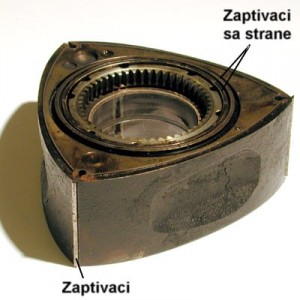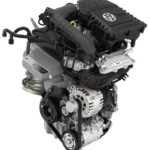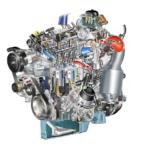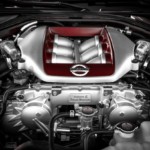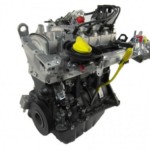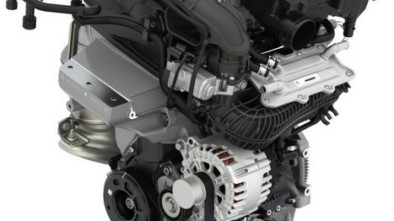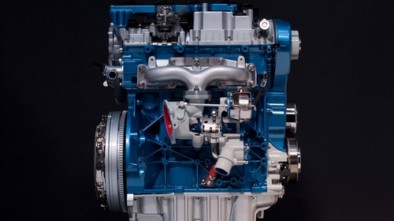Wankel motor - What is a wankel motor, how does it work?
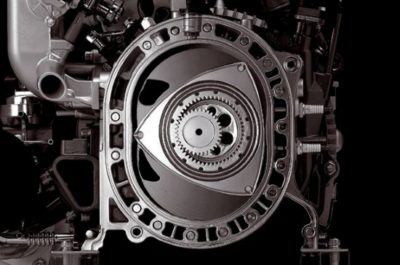
Wankel engine
It is quite interesting how the once promising Wankel engine project through the history of its existence ended, it can be said, quite unsuccessfully. The start of the automotive industry began its existence with the final creation of an internal combustion engine based on the principle of the Otto cycle. This, of course, was an engine whose configuration and principle has remained unchanged to this day - only (significantly) improved. The engine operates on the principle of pistons, cylinders and shafts. Various engineers have been trying to develop a more efficient solution throughout the century (from the creation of the car in 1896 to the present). There have been various patents and inventions, but there simply could not be a solution so effective that finally the classic unit would be withdrawn from production and replaced with a new, better one. For this reason, we still drive cars today, according to the principles that Otto envisioned and implemented back in 1876. There were, however, a few solutions that could deserve a chance. Of these several, one can certainly distinguish Vankel's aggregate. Felix wankel (1902-1988) was a German engineer, later a professor, who is credited with this interesting creation. In fact, the real name of the Wankel engine is a rotating internal combustion machine. Numerous scientists have given their word on this topic even before Wankel himself. The oldest information about this type of engine dates back to the 1933th century, in Italy. Early design work was given even by James Watt and Ericsson, but that was still far from the final version. Felix Wankel himself was quite anxious for his final version, for the simple reason that life in Germany during his period of work was extremely difficult. However, in 1936 Wankel applied for a patent for the DKU rotary machine (the first type of Wankel engine), which he would officially receive in 25000. The DKU (Drehkolben Mashine) is very similar to more modern Wankel machines, except that it is much larger and more impractical (to change spark plug you would have to disassemble the whole engine, etc.) but also more powerful - in normal mode it goes up to 1958 rpm! Still, it was just a prototype; something had to be done that could be used in a wider range of mobile machines. That something was KKM (Kreiskolben Motor) created in the mid-fifties. A crucial role in Mr. Wankel's life was played by employment at NSU. Walter Froede, head of motorcycle work at NSU, saw a great opportunity in Felix Wankel’s work and decided to fund his future projects. As early as XNUMX, the first KKM Wankel engine of some twenty horsepower was constructed. After that, the improvement of this invention starts, and even the installation of Wankel engines in NSU vehicles. However, what is perhaps closer and more familiar to us is Mazda's work. This Japanese company also saw some advantages in the exploitation of engines of this type, so it decided on the first installation in the early seventies. Even today, they do not give up that tradition, so we have a famous one Mazdin the RX series, which has not been leaving the Wankel units since 1978. But how does that engine actually work?
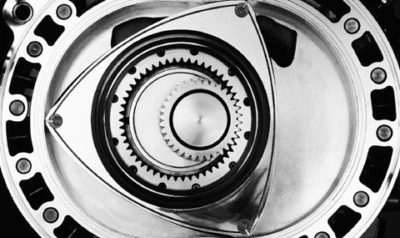
Wankel engine
All existing solutions that marked the history of the auto industry were exemplified by Otto and his cycle / engine. And Wankel belongs to that group. So the Wankel engine also runs on the principle of internal combustion, with all the standard four stages of operation. As mentioned above, these are respectively the INJECTION, COMPRESSION, COMBUSTION, and EJECTION phases. This principle of operation also follows the Otto cycle with the rotating machine. However, the very principle of operation, that is, how this machine conducts these cycles, is completely different from conventional units. One of the biggest differences may be that with classic engines, all four stages take place in the same volume space, in a single `chamber` - cylinder. This is, of course, achieved through the synchronous operation of valves, pistons, cams, etc. On the other hand, with the Vankel engine we do not have classic cylinders with all the accompanying parts (pistons, valves ...) but only one (or two) chambers in which the phases of the said Otto cycle occur separately! The rotating engine also uses the pressure obtained in the combustion phase to drive the assembly. The theory is therefore the same, but the practice is diametrically different. Before we go into explaining how we work, let's first get acquainted with the basic parts of this unit.
Like classic engines, the Wankel has a standard block that is cooled by numerous channels that pass through the base material and through which the liquid passes. Inside the Wankel engine block is a housing (equivalent to the block that holds the cylinders) that wraps around the chamber where the action is read and performed. Inside that (larger) chamber is the basic part of the rotating machine - the rotor. The rotor, logically, rotates and, with the help of a shaft passing through the center of the rotor, moves further gearbox / transmission assemblies, which drive the drive wheels. The rest of the Vankel engine subsystems are similar to those that can be found in classic units, including the fuel / mixture supply system, ie the ignition of the same (spark plug). However, let's focus on the most important part of the Wankel motor, ie the rotor. As you can see in the picture, it is triangular in shape with a gear and a bearing in the middle. This tells us that he can rotate freely, with the center of the axis right in that bearing. So, it is placed upright in the mentioned chamber and it ALWAYS rotates clockwise. The chamber itself has the shape of a stretched circle / epitrochoid and the rotor is placed in it so that there is no free volume space except that between the inner wall of the chamber and the three sides of the rotor. In fact, these are not the classic sides of a triangle, but those of convex shape (convex). The reason for this is the perfect and as easy as possible leaning of the convex sides on the inner walls of the chamber when rotating. At the ends of these pages are specific, convex parts of metal that are in constant contact with the walls of the chamber. Since we have three such seals, it is quite logical that within one chamber, the rotor creates three SEPARATE chambers at one time, in which the Otto cycle process takes place. Let’s go back for a moment to the shape of the chamber itself. It is not a classic circle, but a stretched circle. On the other hand, a rotor is an equilateral triangle that rotates inside it. This tells us that although all the convex sides of the rotor are the same, there are still differences in the volumes of those three smaller chambers. In addition, it should be mentioned that on the surfaces of these convex sides there are special recesses that allow a larger amount of mixture inside the engine at one time. The third important part of the entire system (besides the rotor and the chamber) is the shaft that goes from the middle of the rotor, rotates in the same direction as it is and represents a kind of output of the whole unit. This shaft, as a rule, rotates three times faster than the rotor itself - for one of its revolutions, the shaft rotates three times. Now, how does Wankel's internal combustion process work?
We went over some of the basics of a Vankel engine. We were introduced, if anything, to the basic parts below the block itself. Now they just have to be put together into a functional whole. This is quite easy to do with a rotating machine! The principle behind the operation of the Otto cycle is very simple and logical here, and you probably assume that it works… Anyway, the differences between the classic and the Wankel engine are further deepened here. As I mentioned above, the injection system for the mixture is exactly the same - it used to be via a carburetor, and today electronically. Still, there is a big difference in the way the mixture enters the engine itself. Namely, there are no injectors or special pumps. One part of the chamber (on the side, opposite the sides of the rotor) has an opening through which the carburettor / pump pressurized mixture is constantly injected. Now we will follow one revolution of the rotor in the chamber, that is, we will send one Otto cycle of the Vankel engine:
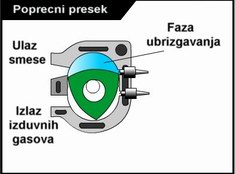
Injection - Wankel engine
INJECTION PHASE: When the Vankel engine is started, the rotor is electrically driven. It then rotates artificially (as in the case of a classic engine) and on that occasion moves the injection of a mixture of fuel and air through the aforementioned openings on the chamber wall. Thus, the mixture will enter the first / one of the free three formed internally by the rotor and chamber, or by its inner wall. The injection lasts until said gasket breaks it, because it closes that one smaller chamber. The mixture is now inside the chamber, inside the engine still rotating clockwise. The rotor now comes to the part of the chamber where it is no longer arched / round but completely flat. That chamber is the smallest and belongs to the second part of our story;

Compression - Wankel engine
Given that such a newly formed chamber is the smallest, it is logical that the pressure in it is the highest. So, we got into COMPRESSION PHASE. When the compression level achieved on this occasion is at its highest, then it is the classic spark plugs that ignite the mixture and make a typical explosion. The rotor continues its revolution and leaves the spark plug section. A new chamber is formed in which the combustion phase takes place;
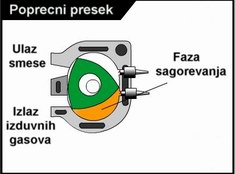
Combustion - Wankel engine
THE COMBUSTION PHASE: At this point, the rotor forms a chamber in the lower (large) chamber. In fact, in the first rotor revolution after an electric starter, this is the part when the entire unit actually starts and starts to run without an electric starter. So, the blast causes the rotor to move on and now Vankel resumes normal operation. In the combustion chamber, all the by-product of an earlier explosion is ejected. Namely, in that part of the large chamber there is an opening which leads all that gas further towards the exhaust branch… This opening is located just below the opening which is used to insert the mixture into the engine. This tells us that the rotor has almost completed its revolution and that it has been completed and Ejection phase! Next, the chamber will be re-formed into which the mixture will be inserted, and then everything starts again…
What is very important is that, reading this text above, you asked yourself (and me) the question `what happens to the other smaller chambers that form at the same time as the rotor rotates?` This is a great question and the first sure sign that you have fully grasped how the Wankel engine works! And the answer to the question is: other chambers are simultaneously doing the process one by one. So, when the first phase of fuel injection occurs and the seal closes that particular chamber, the next chamber is formed (by further rotation), into which the mixture is injected, and so on. The process is repeated countless times. So we get a big chamber where THREE parts of the Otto process can take place at the same time! That certainly has its advantages ... Either way, this is how Vankel turns. By turning the rotor, the central shaft with which the rotor is connected via a gear is actuated. Also, on the central axle there are special hills (such as the camshaft for conventional units) which help the rotor to rotate the shaft. The Wankel engine itself usually has two (or more) chambers with rotors, so there are as many hills as there are. They are mounted on the axle against each other and thus make both rotors not rotate synchronously, but simultaneously - e.g. if one is in the injection phase, then the other is in the ejection phase - hence, the opposite set. This contributes to the cultivated and resilient operation of the entire aggregate. In addition, the Wankel engine has a number of other advantages. Like endurance. The wankel machine will certainly go more miles than standard engines, solely because of the smaller number of engine parts and therefore less likely to malfunction. This unit generally rotates slower than normal because, as we said, the rotor moves three times twice as fast, that is, the shaft. This contributes to less wear on the internal parts of the unit and again - is more durable and durable. Of course, there are also very good reasons why the Wankel engine failed to fight for its place in the sun. First, it is difficult to build such an engine that can comply with all regulations on emissions. The wankel machine has a much stronger explosion in the engine than the standard one, which is why the problem of 'killing' all these gases is a big deal for engineers. The second, and perhaps most important, is the cost price of the highly productive Vankel engine. Today, you have a large number of companies in the world that are suppliers of major global car manufacturers, and parts for standard internal combustion engines. Therefore, according to the law of the market, competition arises, demand increases and prices fall on such products / semi-finished products / raw materials. On the other hand, there are not many such suppliers who can deliver any of the very specific parts of a rotor motor at a normal price. With that in mind, manufacturers who choose to install such an engine must account for much higher costs than those required for cylinder engines. Third, the Wankel engine consumes a lot of fuel. The low compression ratio and the very long explosion in the engine contribute to the fact that such an engine consumes more gasoline. All this is more than enough for manufacturers not to embark on 'adventures' with the installation of Vankel in their vehicles. At least not for now… maybe in a couple of years some better solution and variation on this topic may come up?
Of course, this is Mazda, which has long been known for its frequent use of the Vankel machine in its cars. In 1978, the first came out Mazda RX-7 with a significantly improved version of the previous rotary unit, and 25 years later this technology is not given up. The RENESIS model, which is being installed today in the successor of the series - RX-8, is an extremely bright spot in the further development of this type of drive. The working principle of the engine built into this Mazda is exactly the same as what I have explained in the text so far. Combined with numerous electronic achievements, primarily by controlling the operation of the engine and all relevant units via a computer (ECU), a phenomenal result was achieved with the new RX-8 and its new generation engine! RENESIS is a Wankel KKM rotating machine with two rotors mounted on one central shaft, with a total volume of 1308 cubic centimeters (two chambers of 654 cc each). Of course, this volume represents all the free space that is in the large chamber around the rotor. For the RX-8, there are two versions of the engine - weaker with 192 horsepower and stronger with 231 hp. So, these are very powerful engines with exceptional acceleration, but huge fuel consumption! Still, some would give it their all just to constantly listen to the great, deep sound of this Wankel machine. But, at least the registration of such a car will be significantly cheaper, considering the cubic capacity of only 1,3 liters! Let's hope that someone else will give a chance to this, to put it mildly, interesting drive unit in the near future, even though it is not exactly the ideal engine of the future. I say that primarily because of the increasingly rigorous conditions and norms on exhaust gases that states and communities have been prescribing lately.
Recommendation of similar texts:

Hi there, I am Mladen and I am an auto enthusiast. I started this blog years ago to help like minded people share information about latest cars, car servicing ideas, used car info, exotic cars, and auto technology. You will find helpful articles and videos on a wide variety of cars - Audi, Mercedes, Toyota, Porsche, Volvo, BMW and much more. Ping us if you have anything cool to share on latest cars or on how to make older cars more efficient, or just want to say hi!

